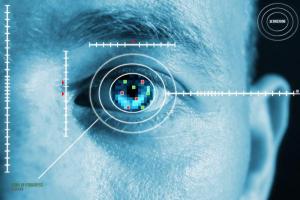Computers Predict Human Visual Attention
Scientists have just come several steps closer to understanding change blindness -- the well studied failure of humans to detect seemingly obvious changes to scenes around them -- with new research that used a computer-based model to predict what types of changes people are more likely to notice.
 |
| Researchers have used a computer-based model to predict what types of changes people are more likely to notice. The achievement sheds light on change blindness -- a failure of humans to detect seemingly obvious changes to scenes around them. (Credit: iStockphoto/Tracy Lorna) |
These findings on change blindness were presented in the Journal of Vision.
"This is one of the first applications of computer intelligence to help study human visual intelligence, " said author Peter McOwan, professor at Queen Mary, University of London. "The biologically inspired mathematics we have developed and tested can have future uses in letting computer vision systems such as robots detect interesting elements in their visual environment."
During the study, participants were asked to spot the differences between pre-change and post-change versions of a series of pictures. Some of these pictures had elements added, removed or color altered, with the location of the change based on attention grabbing properties (this is the "salience" level referred to in the article).
Unlike previous research where scientists studied change blindness by manually manipulating such pictures and making decisions about what and where to make a change, the computer model used in this study eliminated any human bias. The research team at Queen Mary's School of Electronic Engineering and Computer Science developed an algorithm that let the computer "decide" how to change the images that study participants were asked to view.
While the experiments confirmed that change blindness can be predicted using this model, the tests also showed that the addition or removal of an object from the scene is detected more readily than changes in the color of the object, a result that surprised the scientists. "We expected a color change to be a lot easier to spot, since color plays such an important role in our day-to-day lives and visual perception," said lead researcher Milan Verma of Queen Mary.
The authors suggest that the computer-based approach will be useful in designing displays of an essential nature such as road signs, emergency services, security and surveillance to draw attention to a change or part of the display that requires immediate attention.
"We live in a world in which we are immersed in visual information," explained Verma. "The result is a huge cognitive burden which may hinder our ability to complete a given task. This study is an important step toward understanding how visual information is processed and how we can go about optimizing the presentation of visual displays."




















0 comments:
Post a Comment
Please do not spam Spam comments will be deleted immediately upon my review.